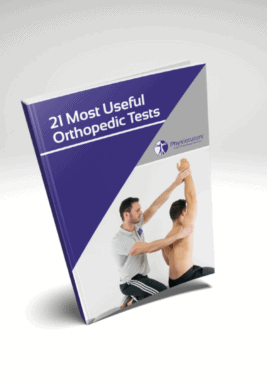Learn
Elbow Extension Test | Olecranon Fracture Screening
In their multi-center validation study, Appelboam et al. (2008) evaluated the Elbow Extension Test and found a sensitivity of 96.8% and a low specificity of 48.5% for the detection of elbow fractures in children from the age of 3 and adults combined.
For this reason, this test has a high clinical value to rule out elbow fractures in practice.
To perform this test, have your patient seated with exposed and supinated arms. Then ask him to flex his shoulders to 90° and then fully extend and lock both elbows. Injured and uninjured sides are compared visually and those with equal extension are recorded as full extension.
Patients who cannot fully extend their elbow after injury should be referred for radiography, as they have a nearly 50% chance of a fracture. For those, who are fully able to extend their elbow, radiography can be deferred if the practitioner is confident that an olecranon fracture is not present. Patients who do not undergo radiography should return if symptoms have not resolved within 7-10 days.
21 OF THE MOST USEFUL ORTHOPAEDIC TESTS IN CLINICAL PRACTICE

If you want to screen for fractures in other body parts, check out the list below:
- Caradeniz Wrist Rules (Wrist)
- Supine Sign (Thoracic Spine)
- Closed-Fist Percussion Test
- Patellar Pubic Percussion Test (Hip)
- Fulcrum Test (Femur)
- Ottawa Knee Rules (Knee)
- Ottawa Ankle Rules (Ankle & Foot)
References
Like what you’re learning?
BUY THE FULL PHYSIOTUTORS ASSESSMENT BOOK
- 600+ Pages e-Book
- Interactive Content (Direct Video Demonstration, PubMed articles)
- Statistical Values for all Special Tests from the latest research
- Available in 🇬🇧 🇩🇪 🇫🇷 🇪🇸 🇮🇹 🇵🇹 🇹🇷
- And much more!








